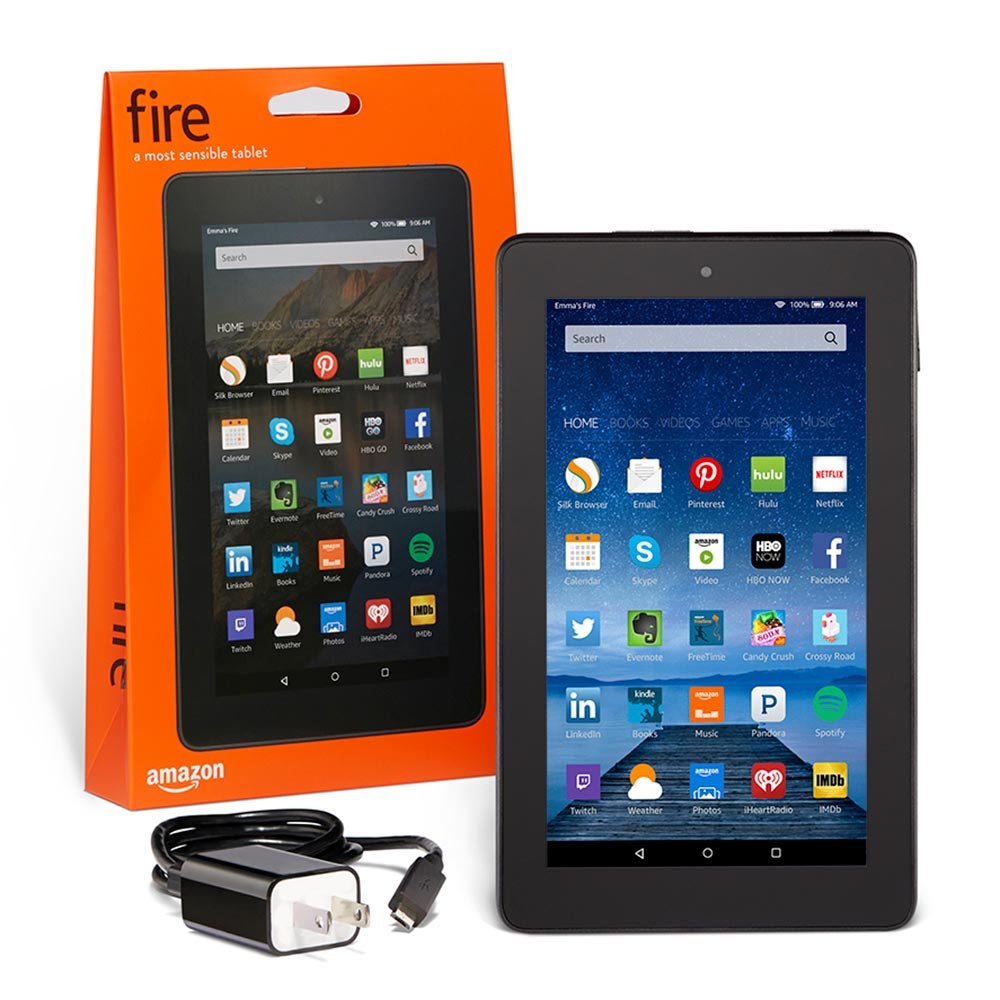 Remember that article I wrote way back, arguing that Amazon’s $50 Fire would annihilate the tablet market for everyone else? Looks like I can preen a bit. ABI Research has confirmed my foresight with its latest numbers on Branded Tablet Vendor Shipments, which put Amazon emphatically ahead of everyone else except Samsung and Apple in 4Q2015 – and apparently eating into those brands too.
Remember that article I wrote way back, arguing that Amazon’s $50 Fire would annihilate the tablet market for everyone else? Looks like I can preen a bit. ABI Research has confirmed my foresight with its latest numbers on Branded Tablet Vendor Shipments, which put Amazon emphatically ahead of everyone else except Samsung and Apple in 4Q2015 – and apparently eating into those brands too.
“ABI Research estimates that the company sold five million of its various tablet models during the final three months of 2015,” states the announcement. “At this figure, Amazon ranks #3 overall for branded tablet shipments for that quarter and #5 for the full 2015 calendar year.” This compares to 1.5 million Amazon-branded tablets sold in 4Q2014. Apple, meanwhile, sold 16.1 million tablets in the crucial gifting season in 2015, versus 21.4 million in 4Q2014, and Samsung sold 9 million units versus 11.1 million in the same period for the previous year (see chart below).
“The incredibly low pricing of the Fire Tablet is a smart and strategic move, as few others can afford to accept a lower margin on their tablet devices in favor of driving a surplus of content-related revenues,” remarked Jeff Orr, Research Director at ABI Research. Note that ABI cites an “average vendor selling price of $323” for the tablet market as a whole, versus the Fire’s $50 sticker price. In other words, Amazon is giving you a highly serviceable tablet for less than one sixth of the (surprisingly high) average – thanks to Apple’s premium pricing, I assume – which can do almost all that the more costly devices can, and plug you in to Amazon’s excellent content delivery services.
“It is a calculated risk that Amazon can afford to take as the company shifts its revenue focus away from solely hardware and toward recurring digital content sales,” remarks ABI. Solely hardware? That’s an odd assumption to pin on the creators of the modern ebook industry. But there’s no doubt that Amazon’s bet – if it was risky at all – has paid off.
And in other other words, Amazon almost quadrupled its shipping of own-branded tablets in the space of one year. Apple, meanwhile, saw its volume trimmed by over 20 percent. And just imagine what each one of those Fires means for Amazon in terms of further content and ad revenues. Not hard to guess which way these trend lines are likely to go in the year ahead …






























Will Amazon destroy the tablet market? No, not even assuming that “destroy” means dominate. It has no more chance of doing that than Henry Ford had of dominating auto sales with his Model T. They were cheap and he sold a lot of them, but there was no lack of those who wanted a car that was different and perhaps better rather than simply cheap, basic transportation. Cheap and basic is a good description of Amazon’s tablets too.
In fact, if I recall the dates correctly, by the late 1920s, Ford was in trouble. Companies like GM were creating more stylish, more versatile cars than Ford. The (rather strange) Henry Ford who was supposed to so dominate the world that dates in Huxley’s Brave New World are based on him, became merely another player in the market.
Apple’s ebook sales issues are more than that flattening iPad sales. The company is making a mistake it did not make with iTunes by failing to port iBooks to Windows and Android. It’s OK to start out with a niche market. It’s foolish to remain one.
Apple’s blundering matters more than Amazon’s success with Kindle tablets. In fact, you could just as easily argue that Amazon’s inability to develop a popular smartphone has left it doomed to second or third place to Apple and Samsung.
Also, there’s an old joke in business that, “We’re selling below cost but making it up in volume.” The point of that joke is that practices like that aren’t the key to success. The more you sell, the more you lose.
I couldn’t believe what a piece of crap that thing was when it arrived. You figure that it wasn’t going to be great for $50 but you also figure Amazon has a reputation and won’t stoop to the level they did.
There are much (much) better alternatives for only slightly more.
I bought this thing at one point, and wound up returning it for a refund. I loved the price. I’d never owned a tablet before, and couldn’t justify the higher price point for essentially a larger rehash of my phone or a scaled down version of my computer, but for $50, why? I could finally see what all the tablet excitement was about.
The problem was that the thing took at least 30 seconds and often several minutes to load a simple website. I tried side-loading alternate browsers and adding browsers from the Kindle store, same story as with their stock browser. The web browsing was horrible and completely unusable. I was on a fast broadband connection and getting web browsing speeds that resembled dial-up on a 28.8 modem.
The weird thing is, all the Amazon apps that connected to their services seemed to work just fine. I realize they were likely optimized to some degree for that very hardware, but still. I couldn’t help but wonder if they had intentionally made web browsing difficult to try to ensure you used it as an Amazon consumption machine to watch Amazon shows streaming, to read Kindle ebooks, and to stream music you purchased from them- upping their sales and eventually hoping to turn you into an Amazon Prime subscriber.
It wasn’t just a matter of their stuff being prominently place and being unable to be uninstalled, which I figured would be the case (The whole reason they forked their OS from Android was to have like video tabs that are links to their content only), but they actually seemed to make sure other people’s stuff wouldn’t work very well, you know, like anything you would access via the web.
To me, that crosses a line. It’s reminiscent of what could happen without net neutrality- except Amazon seems to implement it at the device level, in the case of their tablet.
It’s really hard to index all of the relevant variables in this battle of the titans. Amazon appears to be backing the proposition that they can make a profit on the content that their devices lock customers into whereas Apple wants to make money on everything and is willing to confine itself to the upper reaches of the market. Samsung has yet another strategy. Who will prevail? What metrics are relevant to that question?
That depends upon what consumers value and how they go about sorting out these variables.
I suspect that we are a long ways from knowing who was most correct in their calculations.
The first movers and early adopters are probably atypical.